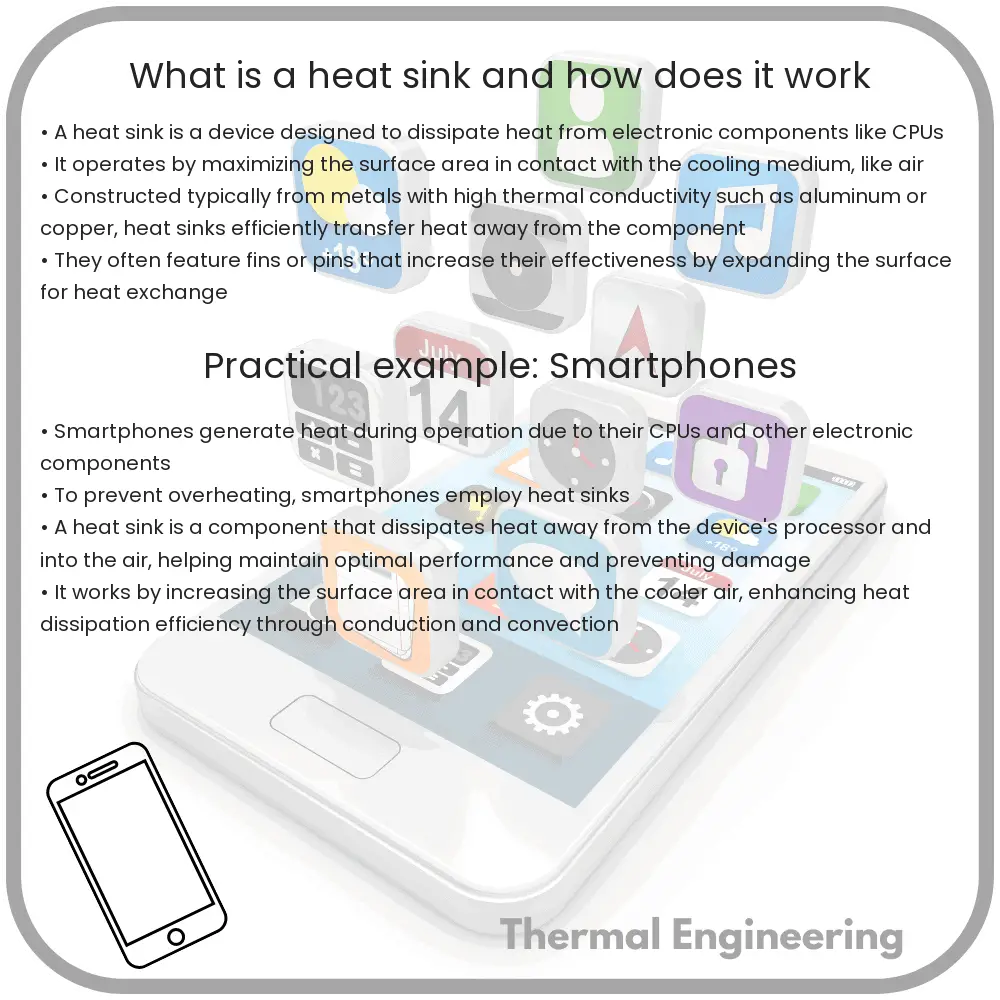Learn how heat sinks effectively manage and disperse heat in electronic devices to prevent overheating and enhance device longevity.

What Is a Heat Sink and How Does It Work?
A heat sink is an essential component in electronic systems and computers, designed to manage and disperse the heat generated by electronic devices such as CPUs, GPUs, and power transistors. By effectively dissipating the excess heat, heat sinks prevent overheating, enhancing the overall efficiency and longevity of devices. Understanding the structure, types, and function of heat sinks is key to appreciating their role in modern technology.
Structure of a Heat Sink
Typically, a heat sink is made from metals with high thermal conductivity, such as aluminum or copper, to facilitate quick heat transfer. The basic structure includes a base that contacts the heat source and an array of extended surfaces—or fins—that increase the heat sink’s surface area, thus improving its ability to dissipate heat to the surrounding environment.
How Heat Sinks Work
The operation of a heat sink revolves around the principles of thermal management through conduction and convection:
- Conduction: Heat is initially transferred from the hot device to the cooler heat sink through conduction. This happens when heat moves from a high-temperature area (the device) to a lower temperature area (the base of the heat sink).
- Convection: Once the heat is conducted to the heat sink, it needs to be dissipated effectively into the surrounding environment. This is accomplished by the fins of the heat sink, where heat is transferred to the air through convection. In simpler terms, the heat is carried away by air molecules that come into contact with the heated fins.
In many cases, a fan is used in conjunction with a heat sink to enhance the convection process. This is known as forced convection and is particularly effective in rapidly moving heat away from the heat sink, which is beneficial in tightly-packed electronic environments like computers or servers.
Types of Heat Sinks
Heat sinks can be categorized based on their manufacturing methods, materials used, and whether they are used with a fan (active) or without a fan (passive):
- Stamped Heat Sinks: These are made by stamping sheets of metal into the desired shape. They are generally used in applications where the heat load is lower.
- Extruded Heat Sinks: This type involves extruding metal, typically aluminum, through a die. Extruded heat sinks are common due to their cost-effectiveness and good thermal performance.
- Forged Heat Sinks: Forging can produce heat sinks with improved mechanical and thermal properties. They are used in more demanding situations where better heat dissipation is needed.
- Machined Heat Sinks: These are typically used for complex or custom shapes where precision is crucial. They can be made from either aluminum or copper and allow for optimized thermal performance.
Understanding the specific types and functions of heat sinks helps in selecting the right one for the application, ensuring efficient heat management in electronic devices.
Conclusion
Heat sinks are critical for preventing overheating in electronic devices, ensuring they operate within safe temperature limits. By effectively managing heat through conduction and convection, heat sinks maintain the performance and reliability of electronic systems. Whether in everyday computing devices or in large industrial applications, heat sinks play an indispensable role in technology.